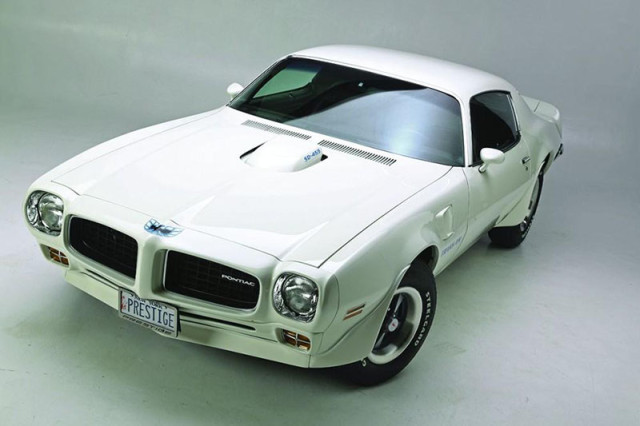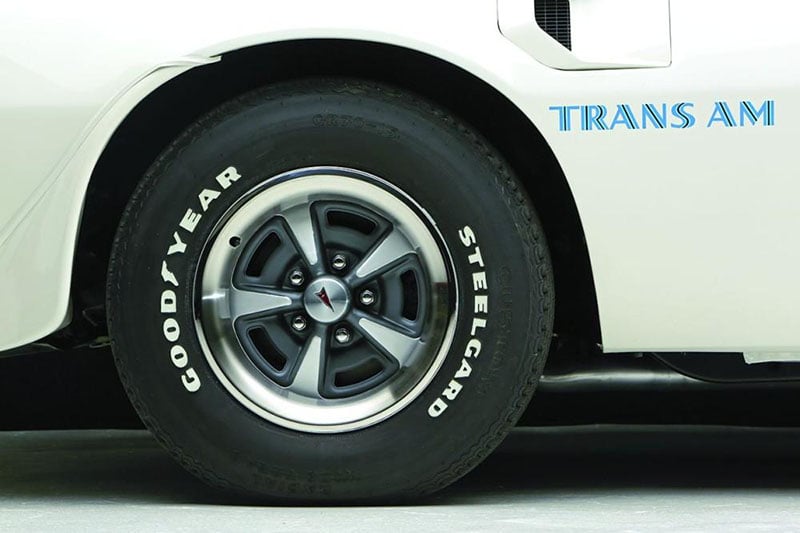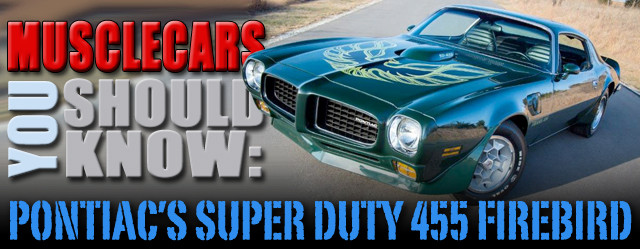 Due to a confluence of outside forces, the early 1970s began to spell dark times for muscle cars and high performance in general. Skyrocketing fuel prices, soaring insurance costs and government regulation that ranged from emissions to bumper design meant that by the middle of the decade most of the once-mighty factory street machines from just a few years prior either soldiered on with their performance completely neutered or they faced the chopping block.
Due to a confluence of outside forces, the early 1970s began to spell dark times for muscle cars and high performance in general. Skyrocketing fuel prices, soaring insurance costs and government regulation that ranged from emissions to bumper design meant that by the middle of the decade most of the once-mighty factory street machines from just a few years prior either soldiered on with their performance completely neutered or they faced the chopping block.
But a few projects managed to slip passed the bean counters and bureaucrats to some degree, and the Pontiac Super Duty 455 V8, available only for the 1973 and 1974 model years, is widely considered the last gasp of serious performance from the muscle car era.
High Performance Resurfaces (Briefly)
At a time when other automakers were festooning their most coveted badges on to graphics packages for vehicles that were quickly heading south of 200 horsepower, GM was still recovering from a 1972 labor strike that nearly caused the automaker to kill off the Firebird and Camaro models entirely.
But Pontiac Special Projects engineer Herb Adams and his team decided to develop a unique high performance version of the Pontiac big-block and install it in the company’s pony car, a move that would help achieve near-mythical status for the rare high output variant.
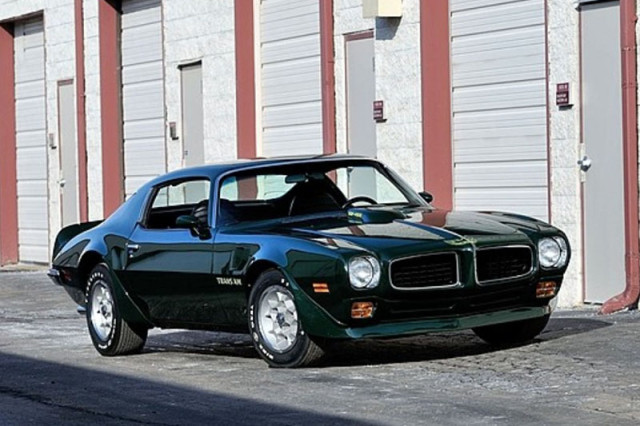
Though the SD-455 looked very similar to the other big block Firebird variants on offer at the time, the lump under the hood was an entirely different animal. Image: Mecum
The result was the Super Duty 455 V8, a name which was a nod to the company’s successful early 1960s efforts in NASCAR and the NHRA. Adams’ team cleverly disguised the new motor as a warmed-over version of the high-volume production 455 in Pontiac’s parts bin, but in reality, the SD-455 more closely resembled a detuned race motor and shared very little in common with the more pedestrian Pontiac 455.
Not only did the SD-455 have the goods to match the hype, when properly configured to reach its true engineered capability the engine was reported to be an absolute monster. Sporting a reinforced block with 4-bolt main bearings, forged pistons and connecting rods, a nitride-hardened crankshaft and new oval-port cylinder heads, it’s said that aggressively tuned development motors were making nearly 600 horsepower and 600 pound-feet of torque at GM’s testing labs.
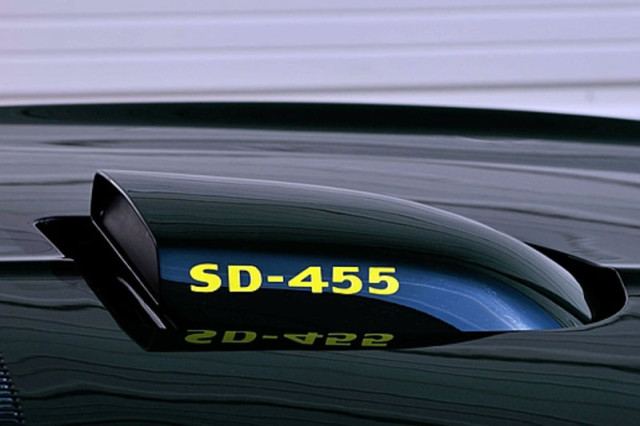
Just removing the metal block-off plate from the shaker scoop (which in turn made it totally functional) yielded substantial performance gains. Image: Mecum
Of course to meet emissions standards and noise regulations the production versions of the SD-455 were far milder. But Pontiac’s engineers made sure to keep all the engine’s original potential by retaining the high performance internals in the production version.
However, they purposely packaging them with a mild camshaft, restrictive exhaust and other easily modified components that would keep the engine in compliance with the ever-tightening regulation targets – while also making it easy to unlock significantly more power from the motor through simple aftermarket modifications.
Even the metal block-off plate on the shaker scoop that was installed so that the car would meet sound level standards could be easily removed to make the intake functional, a modification that was said to be good for two tenths in the quarter mile and a 3 mph increase in trap speed.
Although the engine yielded a far less impressive SAE net rating of 290 horsepower and 395 pound feet of torque by the time it made it to production, it was still highest output motor available from a Detroit automaker in 1973 and 1974. The car also boasted mid-13 second quarter mile times (as reported by various media outlets) which authoritatively blew the competition into the weeds. There is some debate, however, as to whether or not those test cars were provided in production specification when reviewed in 1973, as subsequent tests after the car’s release to the public yielded slower times.
The 1974 model year would see a minor refresh of the Firebird with the transition to the 'shovel-nose' front end as well as the wider slotted tail light design. Image: Hemmings
By The Numbers
Between 1973 and 1974, Pontiac would produce just 1296 examples of the Firebird equipped with the Super Duty 455 at an additional cost of $500, with 101 of those being outfitted in Firebird Formula models and the rest installed in Trans Ams. The SD-455 could be had with a Muncie 4-speed manual gearbox, but the majority of buyers opted for the three speed automatic gearbox instead.
Images: Barrett-Jackson, Hemmings, Mecum
For the 1973 model year, 43 Firebird Formulas received the SD-455 and only 10 of them were paired with the 4-speed. That same year 252 Trans Ams would be outfitted with SD-455 package, and 72 of those also got the manual gearbox.
For 1974, the second and final year of production for the SD-455, a total of 58 Firebird Formula SD-455s and 943 Trans Am SD-455 cars were built, with 212 of the latter receiving the Muncie 4-speed gearbox. Figures for how many manual transmission-equipped 1974 Firebird Formula SD-455 models were built are not available, but suffice to say that the figure is likely quite low.
Spotting The Real Deal
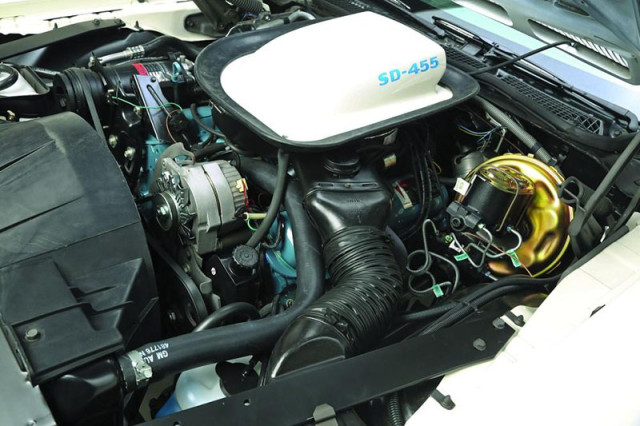
The SD-455 looks almost identical to the standard Pontiac 455 externally, but most of the similarities end there. Image: Hemmings
Considering its status as legitimate contender during a particularly dismal time for high performance and the relatively low amount of Firebirds that were built with the SD-455, it comes as little surprise that many standard Firebirds of the era were subsequently retrofitted to resemble the more desirable SD-455 cars.
Compounding the problem for would-be collectors is the fact that externally the SD-455 is almost identical to the more pedestrian Pontiac 455 V8 with an iron block and turquoise painted valve covers. The SD-455 does get a unique intake manifold however, which is denoted by an LS2 (1973) or an LS2X (1974) cast on it. There are a few other spots that prospective buyers can check to verify an SD-455’s authenticity, many of which are documented here.
Despite helping the model recover from a dismal 1286 total sales for all Firebirds in 1972 – which rose to 4,802 in 1973 and soared to 10,255 for 1974 – it wasn’t until the following year when the Super Duty option was dropped that Firebird sales really hit their stride, leaping beyond 27,000 examples sold in 1975.
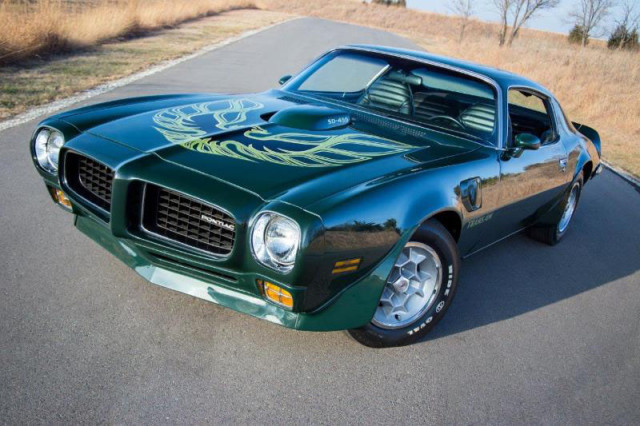
Another iconic Firebird feature also debuted for the 1973 model year – the “screaming chicken” hood decal. It was a $55 option. Image: Barrett-Jackson
That may seem like an odd market reaction to a reduction in performance options, but it is due in no small part to the fact that with the introduction of the Pinto-based Ford Mustang II the previous year and the discontinuation of both the Dodge Challenger and Plymouth Barracuda after 1974, the GM F-bodies had essentially no competition in the pony car market at that point.
Regardless, while the initial plan was to offer the SD-455 for the 1975 model year, Pontiac engineers couldn’t get the car to comply with the EPA’s newest emissions standards and the option was discontinued. Due to the car’s brief stint in production and legendary performance for the era, original examples can fetch over $100,000, with the especially rare manual gearbox equipped examples sitting at the top of the value totem pole.
Clones have popped up from time to time, and unscrupulous sellers might not do all their research before claiming they have an original SD-455 Firebird. We’ve even seen some with the improper text on the shaker stating it was a 455 SD, clearly a seller that is not as much of an enthusiast that he expects his potential buyer to be. Our advice: If you truly want an original, expect to pay a bit more – and do your research before you drop a chunk of change on a clone. The real one’s are out there, but they’re often pricey.



